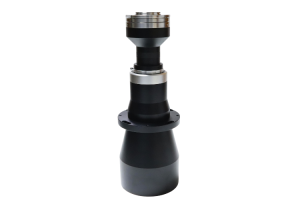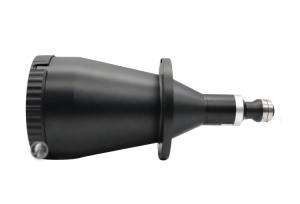Telecentric lenses function by minimizing the edge angles of both the image sensor and incoming light rays. This meticulous approach results in minimal distortion and an enhancement in image quality. In conventional optics, light rays typically diverge at varying angles as they exit the lens. In stark contrast, telecentric lenses maintain all light rays in parallel alignment upon leaving the lens. The distinguishing feature becomes evident when comparing images captured by standard and telecentric lenses. Telecentric lens-captured images exhibit heightened precision and intricate details.
The key to the remarkable precision of telecentric lenses lies in their construction. Telecentric lenses consist of two lenses with varying focal lengths. The initial lens captures light from the object being imaged and then directs it towards the second lens. The second lens subsequently projects the light towards the rear of the device, specifically the diaphragm. This diaphragm functions as a control mechanism, regulating the quantity of light entering the sensor. It ensures that only light rays aligned parallel to its surface are allowed to pass through.
This meticulous process results in highly accurate images, as it effectively eliminates aberrations caused by off-axis rays. It’s an accomplishment that standard lenses cannot replicate.


Utilizing telecentric lenses brings forth a set of advantages and disadvantages. The most evident benefit lies in the elimination of parallax or perspective errors, while the drawbacks are primarily related to cost and size. Here is a breakdown of the pros and cons of telecentric lenses:
Pros:
Cons:
In industries or fields of study where precision measurements through telecentricity are imperative, telecentric lenses become the sole choice. Their use is a non-negotiable decision, rendering discussions about opting for conventional lenses over telecentric lenses irrelevant.
The versatility of telecentric lenses finds applications across numerous industrial sectors, particularly in the realm of automated processes. Telecentric lenses play a pivotal role in machine vision technology, enabling machines to perceive and efficiently execute their designated tasks.
The reliability of telecentric lenses as guidance mechanisms in machine vision processes, including inspection and identification, underscores their significance. Various trades and industries benefit from the advantages telecentric lenses offer, including:
Telecentric lenses prove beneficial in any task requiring precision and the unique attributes they bring to the table.
Telecentricity, achieved through suitable apertures, ensures precise optical design. Telecentric lenses produce images free from parallax errors and offer the most accurate 2-dimensional object representation.
They are classified as object-space or image-space telecentric lenses based on aperture placement. Bi-telecentric lenses incorporate apertures at both ends and are widely used in optics and metrology.
While telecentric lenses may have a higher cost, their indispensable precision makes them essential in applications demanding telecentricity. Incorporating telecentric lenses is the solution for industries, studies, and professions seeking precision through machine vision.
At Shanghai Optics, our expertise lies in providing top-quality custom telecentric lenses. Explore our range of custom telecentric lenses solutions and place your order today. For any inquiries, please feel free to contact us, and we’ll be delighted to assist you.